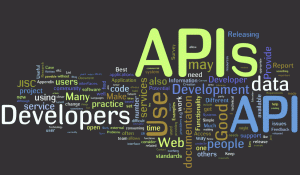APIs and the Cultural Heritage Sector
Posted by Marieke Guy on May 8th, 2009
Background
API stands for ‘application programming interface’ and is the interface that a computer system, library or application provides in order to allow requests for service to be made of it by other computer programs, and/or to allow data to be exchanged between them. A Web API is the Web version of this interface. It comprises of documented code and is effectively a way to plug one Web site or Web service into another.
Recently many Web sites have exposed APIs and made them available to external developers. The term Open API is often used to describe the technologies that allow this interaction.
Why?
There are many potential benefits of provision of APIs. The key one is that others will reuse your data and possibly create mash-ups with it. This in turn means your data will reach a much wider audience. As it would be tricky to find a cultural heritage institution that didn’t have reaching wider audiences listed on its wish list, providing APIs makes a lot of sense.
So What’s Happening in the Cultural Heritage Sector?
Recently there has been a lot of API activity in the museums sector with many big museums like the Science Museum (London, UK), the Powerhouse Museum (Sydney, Australia) and the Brooklyn Museum (New York, US) releasing their APIs.
Libraries have long been at the forefront when it comes to mashing up data. From John Udell’s library look up tool, to the days of the Talis Mashed up Library competition and on to the Mashed Library events, held last year on the 27th November 2008 at Birkbeck College, London and taking place later this year at the University of Huddersfield. (There is an article written by Paul Miller entitled What Happens When We Mash The Library? on earlier activities.) Many libraries have released APIs and a useful list of library-related APIs is available from the Mashed Library Web site.
How do we Start?
There is a now a lot of literature available on writing APIs, releasing APIs and supporting them. One useful place to start might be UKOLN’s recently released Introbyte document: An Introduction To APIs.
API developers and users may find the deliverables of the UKOLN Good APIs project useful. The Good APIs project has recently been carried out to look at what makes a good API. Although the project focussed on activity in the UK Higher Education arena many of the results and outcomes are transferable to the cultural heritage sector. One such outcome is the list of good practice techniques for API creation and consumption. The techniques are currently open for comments.


June 6th, 2009 at 2:04 am
[...] and the Cultural Heritage Sector http://blogs.ukoln.ac.uk/cultural-heritage/2009/05/08/apis-and-the-cultural-heritage-sector/ [...]